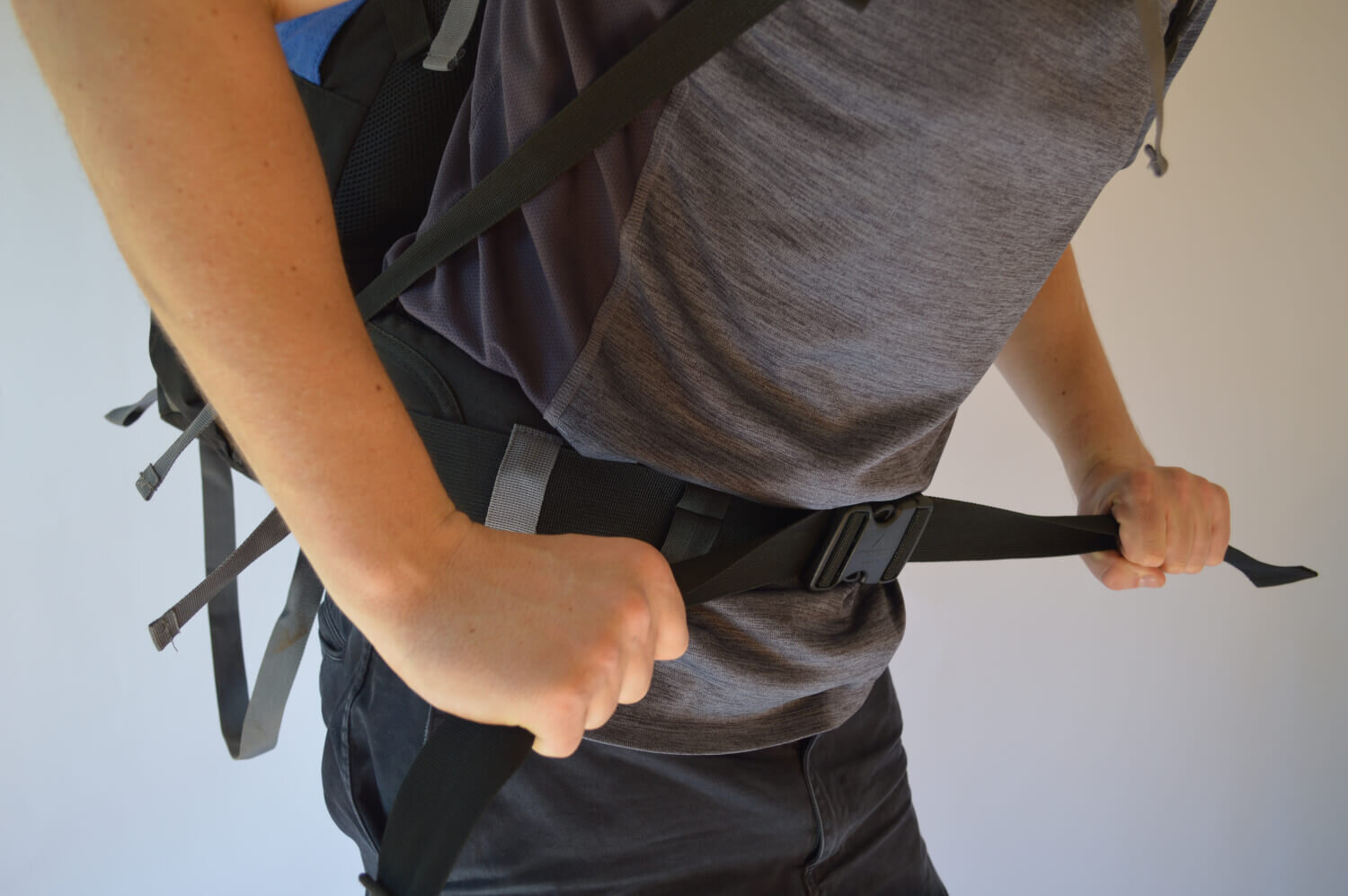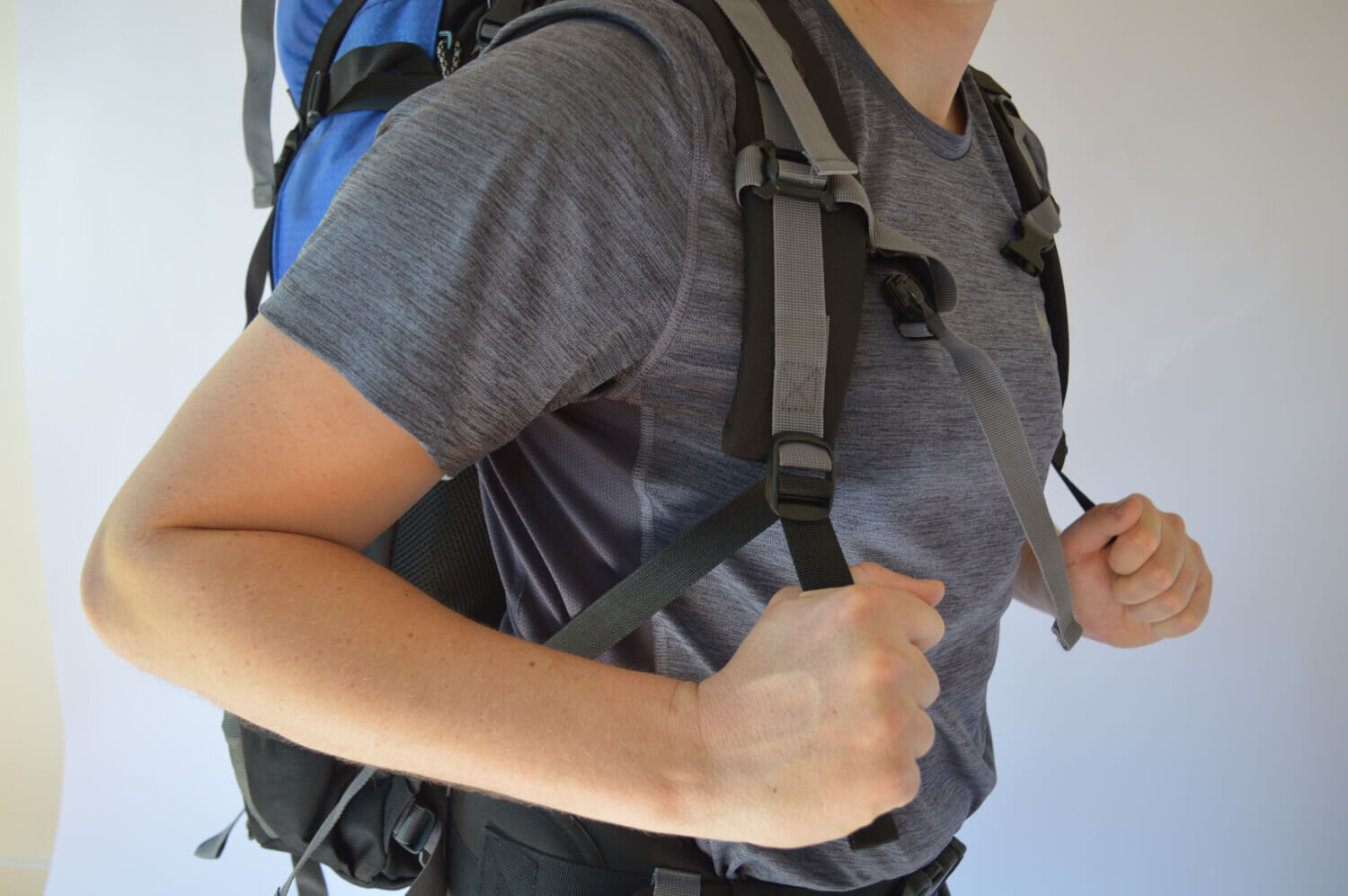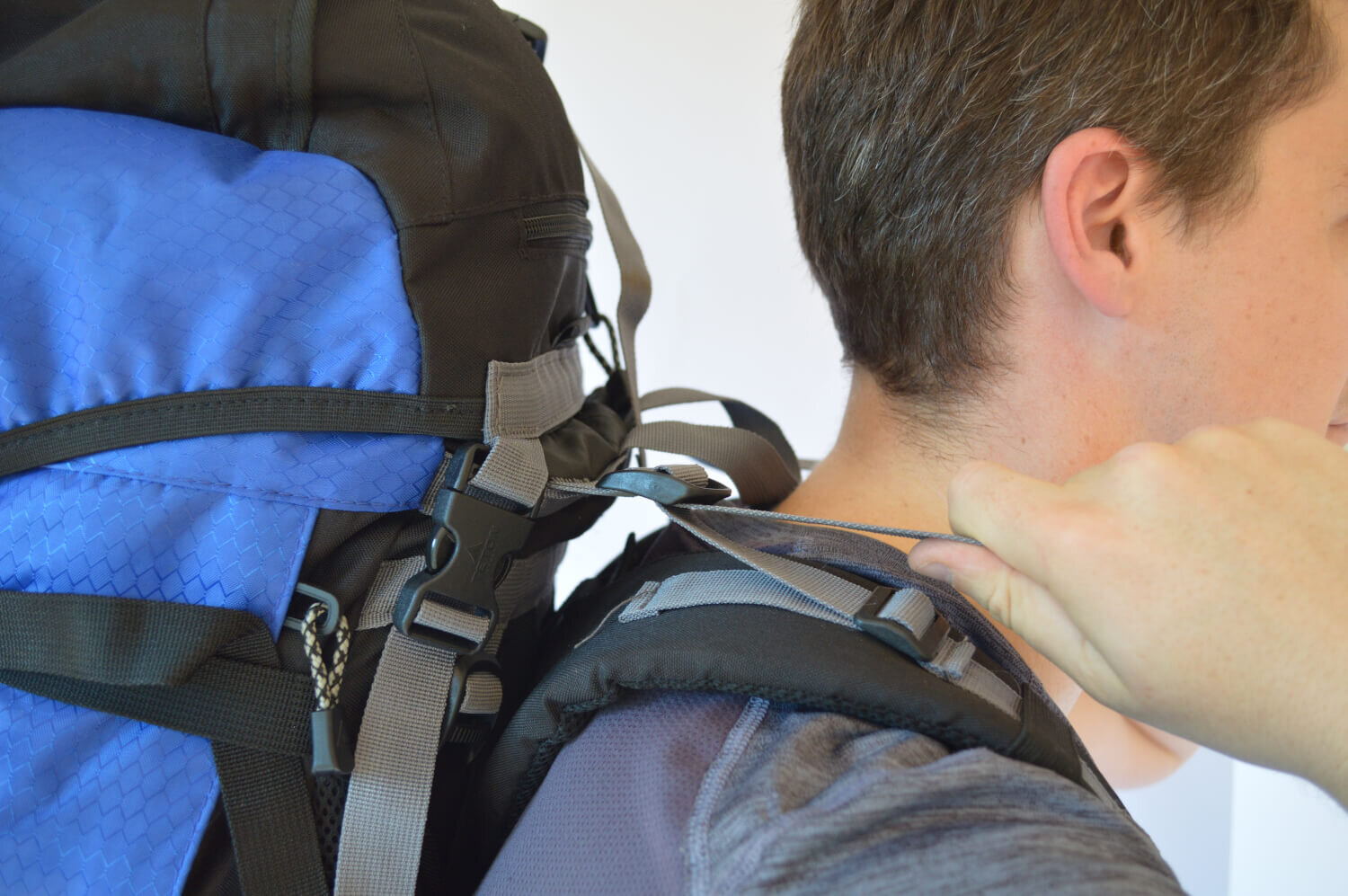How To Fit A Hiking Backpack
This guide provides the basics of fitting a hiking backpack. A correctly fitting backpack can make all the difference for a comfortable hiking trip so it’s worth taking the time to get it right. If you are looking to rent a hiking backpack please view our camping equipment rental page.
Step 1: Before you begin
Remember throughout this fitting the following key principals are the goal:
You want to be carrying two-thirds of the weight on your hips and one-third on your shoulders.
The backpack should move with you if you’re turning side to side.
Step 2: Measure Your Back Length
Measure the length of your spine from the very top of your hip bones to the C7 vertebrae (the big bony lump at the back of your neck).
How to measure your back length
Step 3. Modify the backpack’s back length adjuster
46cm back length is the top notch on the the backpack. Every notch on the back length adjuster equals 2cm. If you measured 48cm for instance you would need to raise the adjuster 1 notch. If you measured 42cm you would need to move the adjuster down 2 notches from the top (as pictured below).
Image shows adjuster in correct position for a 42cm back length
Step 4: Waist Belt
Put on your backpack (with all your gear in it for correct fitting) and loosen all the straps.
Lean forward slightly, buckle and tighten the waist belt so that the bulk of the padding rests on the hip bones. The top edge of the waist belt should sit roughly 1-2 cm above the highest point of the top of the hip bones (iliac crest).
Images shows tightening of waist belt
Step 5: Shoulder and chest straps
Tighten the shoulder straps so they are snug, but so that most of the weight (roughly two-thirds) is still felt on the hips.
Clip and tighten the sternum strap so it is comfortable. The shoulder straps shouldn’t be falling off your shoulders or cutting into your neck.
Images show tightening of shoulder and chest straps
Step 6: Load straps
Finally, tighten the load straps so they are about a 45 degree angle.
The backpack should be close enough to your back so it moves in unison with your body. If the load straps are too loose the pack will sit back and be hard to manage; if they are too tight they can lift the shoulder straps off your shoulders
Can’t get comfortable? Packs can take a while to get comfortable. Check if there is excess space between the top of your shoulder and the shoulder strap. If there is, you probably need to move the back-length adjuster down a notch. Alternatively, if the waist belt keeps riding high on your hips you may need to move the back-length adjuster up a notch.







